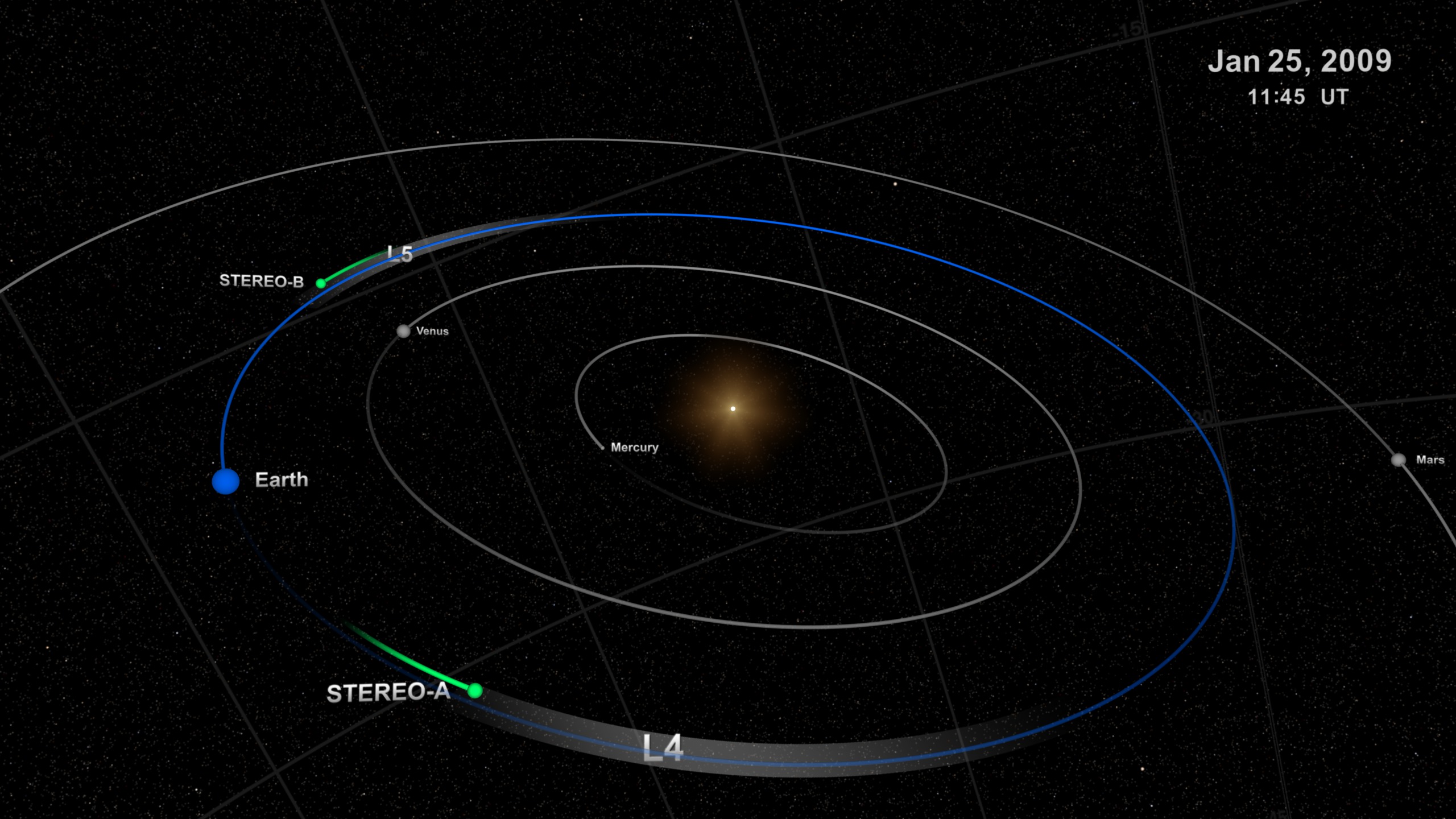Sun
Planets and Moons
ID: 3591
The two STEREO spacecraft orbit the Sun in orbits slightly different from the Earth. STEREO A orbits between the Earth and the Sun, while STEREO-B orbits beyond the Earth and the Sun. As a result, relative to the Earth, STEREO-A appears to move ahead of the Earth, while STEREO-B falls behind the Earth, in their motion around the Sun.




STEREO Visits the Lagrange Points - L4 and L5
In this configuration, the two spacecraft are now passing near the two stable Lagrange Points, L4 and L5, of the Earth-Sun system. The STEREO spacecraft are imaging these regions in the hopes of finding material that might have been left over from the original formation of the Solar System.
Revision Note: April 15, 2009:It was pointed out that L4 and L5 were reversed in the initial release of this visualization. These animations and stills were revised to reflect the corrections. We apologize for any inconvenience.




Visualization Credits
Tom Bridgman (Global Science and Technology, Inc.): Lead Animator
Greg Shirah (NASA/GSFC): Animator
Michael Kaiser (NASA/GSFC): Scientist
Therese Kucera (NASA/GSFC): Scientist
Greg Shirah (NASA/GSFC): Animator
Michael Kaiser (NASA/GSFC): Scientist
Therese Kucera (NASA/GSFC): Scientist
Please give credit for this item to:
NASA/Goddard Space Flight Center Scientific Visualization Studio
NASA/Goddard Space Flight Center Scientific Visualization Studio
Short URL to share this page:
https://svs.gsfc.nasa.gov/3591
Mission:
STEREO
Data Used:
Note: While we identify the data sets used in these visualizations, we do not store any further details nor the data sets themselves on our site.
Keywords:
SVS >> Earth
SVS >> Gravity
SVS >> HDTV
SVS >> Mars
SVS >> Mercury
SVS >> Venus
SVS >> Orbit
SVS >> Big Bang
SVS >> Lagrange Points
SVS >> STEREO
SVS >> For Educators
SVS >> Birth of Solar System
NASA Science >> Sun
NASA Science >> Planets and Moons
https://svs.gsfc.nasa.gov/3591
Mission:
STEREO
Data Used:
STEREO
The STEREO mission consists of two Sun-observing spacecraft that will travel around the Sun on orbits slightly inside and slightly outside Earth's orbit.
SSCweb also referred to as: SSCweb ephemerides
Ephemeris - NASA/GSFC Space Physics Data Facility - 2008-11-01 to 2009-12-30
Satellite ephemerides
Keywords:
SVS >> Earth
SVS >> Gravity
SVS >> HDTV
SVS >> Mars
SVS >> Mercury
SVS >> Venus
SVS >> Orbit
SVS >> Big Bang
SVS >> Lagrange Points
SVS >> STEREO
SVS >> For Educators
SVS >> Birth of Solar System
NASA Science >> Sun
NASA Science >> Planets and Moons











